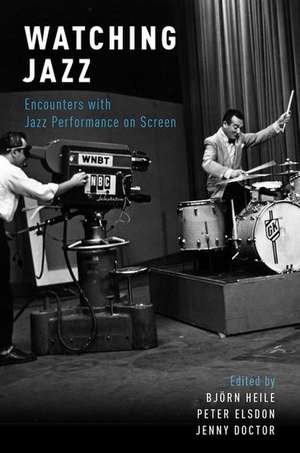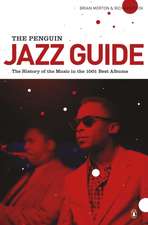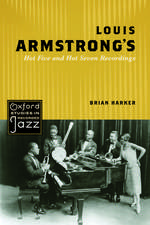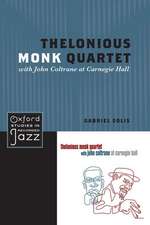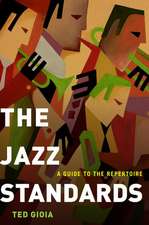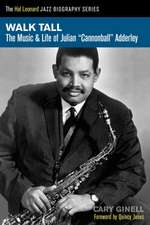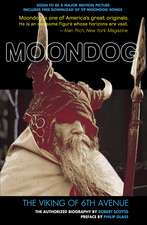Watching Jazz: Encounters with Jazz Performance on Screen
Editat de Björn Heile, Peter Elsdon, Jenny Doctoren Limba Engleză Hardback – 23 iun 2016
| Toate formatele și edițiile | Preț | Express |
|---|---|---|
| Paperback (1) | 253.16 lei 31-37 zile | |
| Oxford University Press – 4 aug 2016 | 253.16 lei 31-37 zile | |
| Hardback (1) | 716.70 lei 31-37 zile | |
| Oxford University Press – 23 iun 2016 | 716.70 lei 31-37 zile |
Preț: 716.70 lei
Preț vechi: 1028.96 lei
-30% Nou
Puncte Express: 1075
Preț estimativ în valută:
137.13€ • 143.20$ • 113.24£
137.13€ • 143.20$ • 113.24£
Carte tipărită la comandă
Livrare economică 04-10 aprilie
Preluare comenzi: 021 569.72.76
Specificații
ISBN-13: 9780199347650
ISBN-10: 0199347654
Pagini: 312
Ilustrații: over 50 illustrations
Dimensiuni: 239 x 160 x 23 mm
Greutate: 0.6 kg
Editura: Oxford University Press
Colecția OUP USA
Locul publicării:New York, United States
ISBN-10: 0199347654
Pagini: 312
Ilustrații: over 50 illustrations
Dimensiuni: 239 x 160 x 23 mm
Greutate: 0.6 kg
Editura: Oxford University Press
Colecția OUP USA
Locul publicării:New York, United States
Notă biografică
Björn Heile is Reader in Music since 1900 and Head of Music at the University of Glasgow. He is the author of The Music of Mauricio Kagel (2006) and editor of The Modernist Legacy: Essays on New Music (2009).Peter Elsdon is Senior Lecturer in Music at the University of Hull. He is the author of Keith Jarrett's The Köln Concert (2013), and he has also published work on jazz recordings, and gesture in music.Jenny Doctor is Associate Professor of Communications and Director of the Belfer Audio Archive at Syracuse University. She has published The BBC and Ultra-Modern Music, 1922-36 (1999); The Proms: A Social History, co-edited with David Wright and Nicholas Kenyon (2007); and Silence, Music, Silent Music, co-edited with Nicky Losseff (2007).
Recenzii
Watching Jazz is an enlightening and enjoyable book. Well written and well edited, these chapters speak to each other, and contrasting viewpoints come across as alternative understandings rather than conflicting standpoints. I recommend this book to any jazz, media, or social history scholars seeking to explore new ways in which to think about the production and reception of jazz, or the ways that the music and audiovisual presentation developed in tandem. Watching Jazz is a timely collection, as it builds upon recent scholarship (by Elsdon, Brian Harker, Katz, Jed Rasula, Gabriel Solis, Catherine Tackley, Keith Waters, and others) about the role of audio recording in jazz, and expands this scholarship by showing how the visual element directs viewers towards aspects of the music, which in turn allows them to see and hear elements of jazz more clearly.
